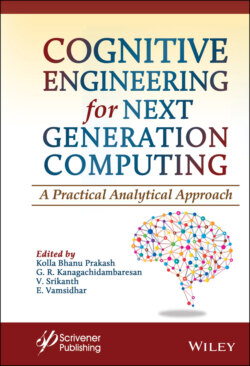Читать книгу Cognitive Engineering for Next Generation Computing - Группа авторов - Страница 17
1.3 Cognitive Computing Evolution and Importance
ОглавлениеThe basis for cognitive computing is artificial intelligence. Artificial Intelligence has roots back at least 300 years ago, but in the last 50 years, there is much research and improvement in this field which has impacted the development of cognitive computing. The combined work of the mathematicians and scientists in converting the working of a brain into a model such that it mimics the working of the brain, but it has taken a long time to make them work and think like a human brain. During WW-II England has achieved victory due to the decoding of the messages of the opponent and this is achieved by the great work of Alan Turing who worked on the cryptography. Later Turing worked on machine learning and published a paper “Computing Machinery and Intelligence” in which he put up a question “Can machines think”, he greatly believed that machines can think and also throw away the argument that the machines cannot think as they do not have any emotions like the human beings. In the later years, he came up with the famous Turing test to prove that machines can think as human beings do. From ten many scientists had contributed to the development of artificial intelligence and can be termed as modern artificial intelligence. The cognitive computing is still evolving. Figure 1.3 shows how the evolution of Cognitive Computing had taken place over the years.
The main focus of cognitive computing is on processing methods, here the data that is to be processed need not be big. The most important thing in understanding the working of the brain is how a brain can decode the image and it is well known that 20% of the brain working function is allocated for the vision and the working of the brain in the image processing is highly efficient. The brain can do things with limited data and even the limited memory is not affecting the cognition of image information. Cognitive science helps to develop the algorithms required for cognitive computing, making the machines to function like a human brain to some degree of extending [14]. The only way to build up the computers to compute as a human brain is to understand and cognize the things and surroundings in the perspective of how a human brain thinks. The cognitive computing is very much important and critical to building up the cognition of a machine and thereby making it to understand the requirements of humans [15]. There is a necessity to make the machines think like humans and they must be able to make decisions and have some intelligence as of humans, of course, a lot of improvement is to be made in this field. With the help of the present techniques, it is possible to make machines think like humans, as they involve reasoning, understanding complicated emotions. Cognitive computing had made tremendous progress and also exceeded the conventional machine learning. Internet of Things is one technology that had made very good progress and helping the people in many ways and now IoT is embedded with cognitive computing developing a smarter Internet of Things systems assisting the humans in many ways like providing vital suggestions and helping in the decision making [16].
Figure 1.3 Showing the evolution of Cognitive Computing [13].
In today’s world with a lot of sensors around a lot of data is being generated all the time in many forms. The evolution of cognitive computing is to make a sense in this multifaceted world with this large volume of data. The older technologies have been developed to make sense with the structured data and machines, software is also developed to deal with such type of data and gathering information from the structured data. The growth of social site and apps have impacted the growth in the unstructured and semi-structured data and these older technologies are no more a way to handle these types of data and the cognitive computing helps in gathering the information from all types of data Unstructured, Semi-structured, and Structured data. Without the handling of these different types of data, a lot of information can be missed and the cognitive computing is going to help the humans to collaborate with the machines so that a maximum gain can be extracted from them. In the past also we have seen the technology had transformed the industries and also the human way of living from the last decades. Transactional processing had started in the 1950s had brought a lot of transformation in government operations and also in business transactions, giving a lot of efficient ways to deal with the operations. During that time the data was limited and major data is structured data and tools are developed to handle this type of data and many mining tools are developed to extract the information from that data. A large amount of data cannot be handled by the traditional tools and methods, so we need a mixture of traditional methods with traditional technical models with the innovations to solve the niggling problems.
